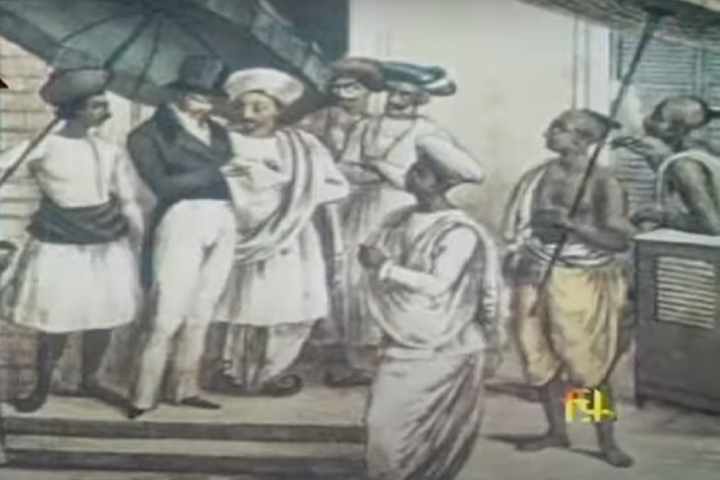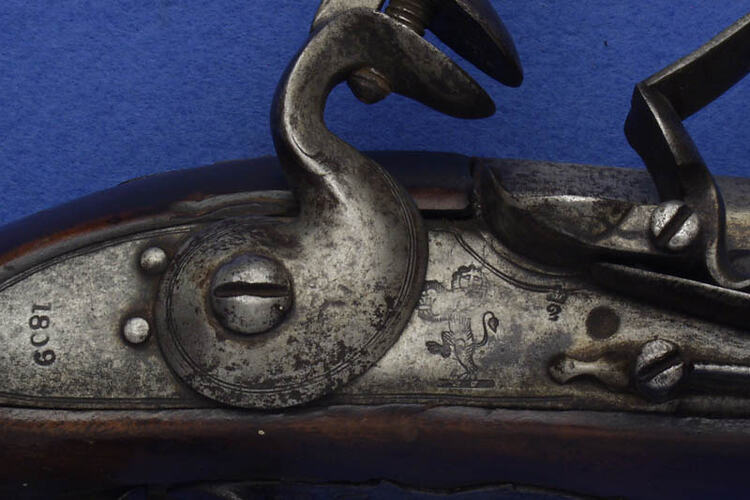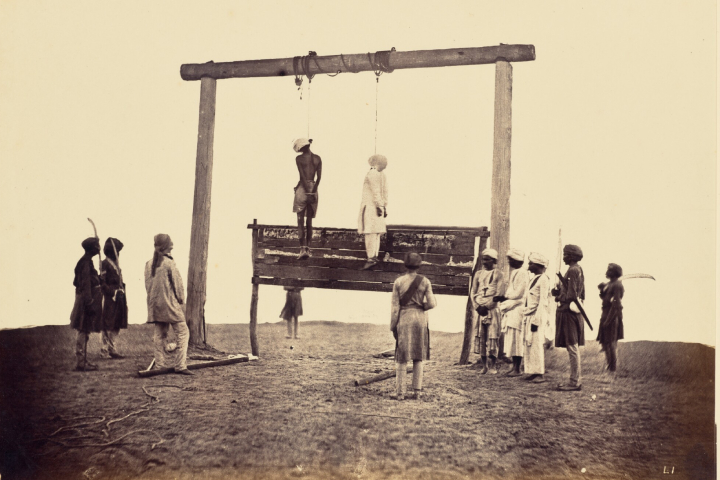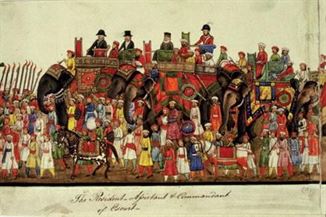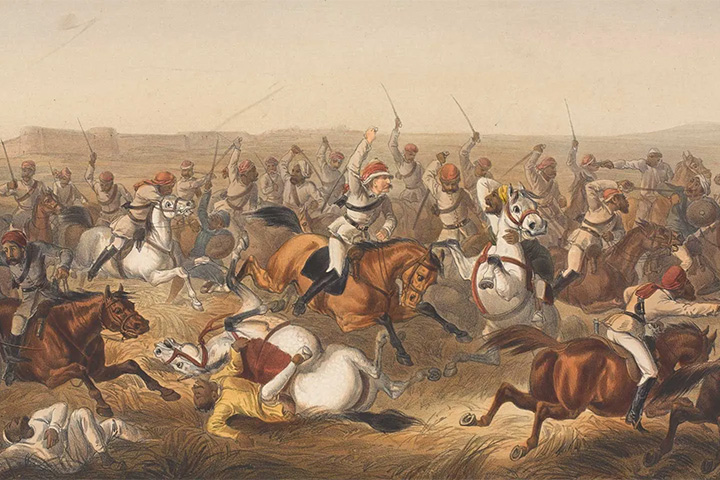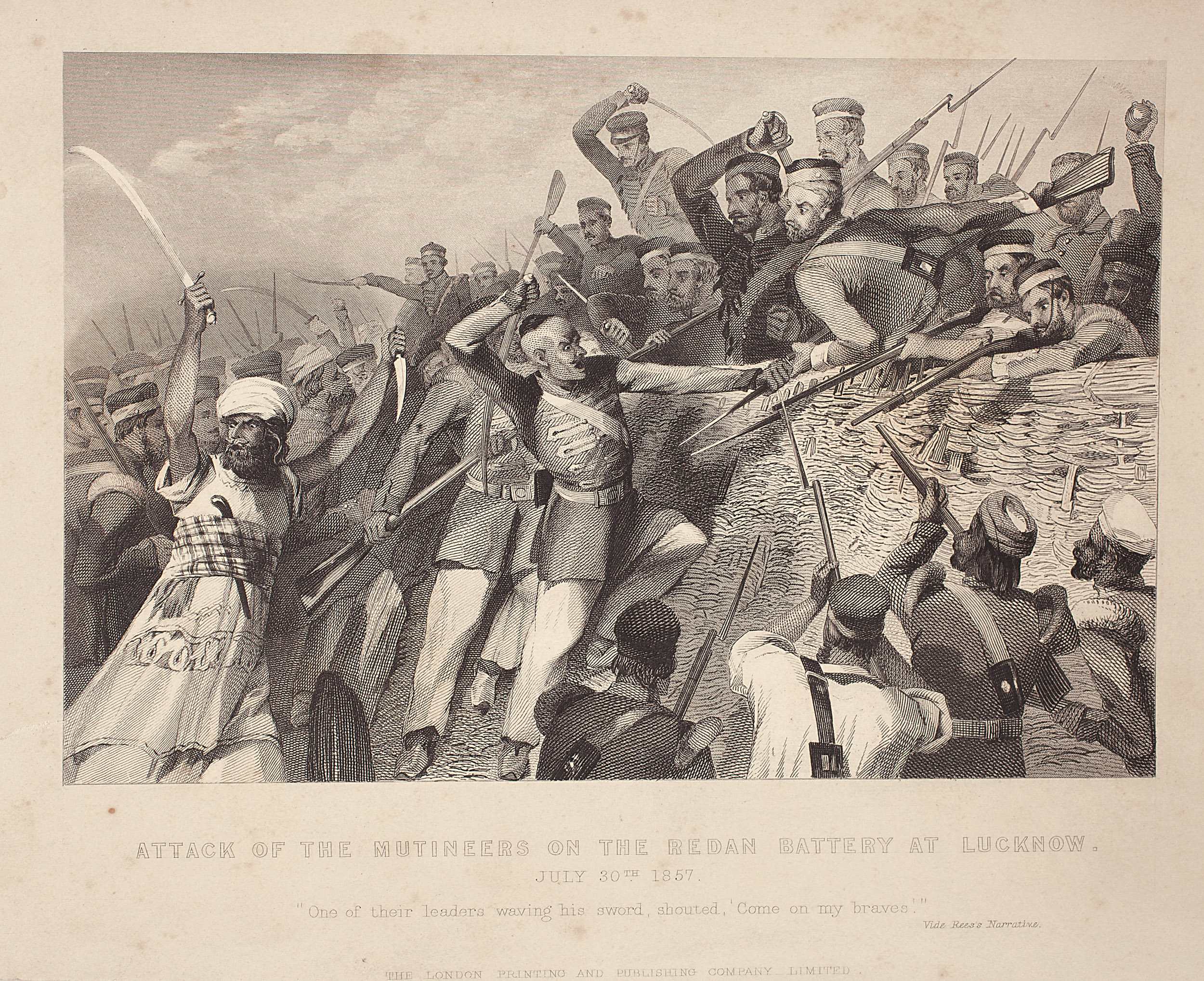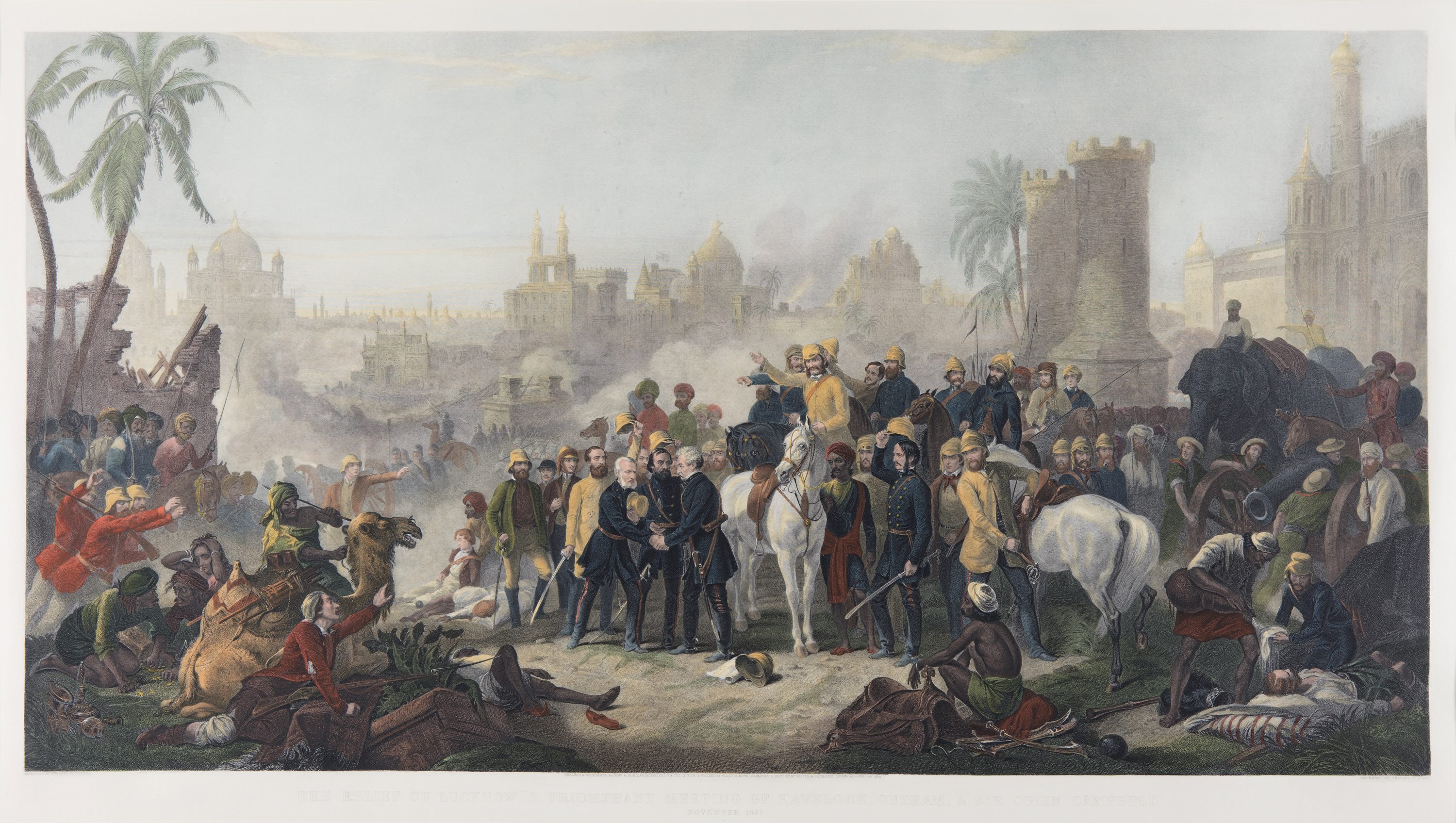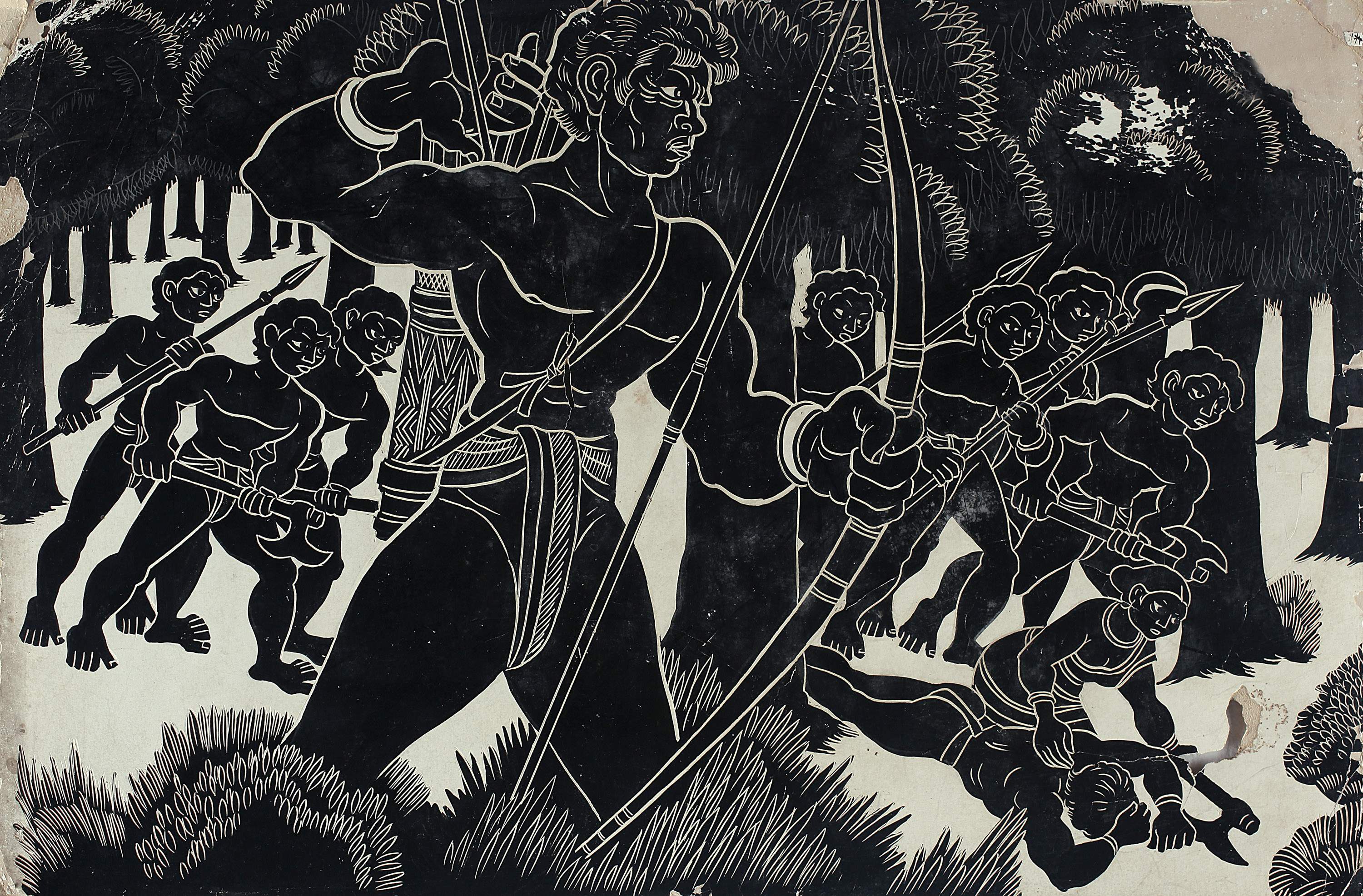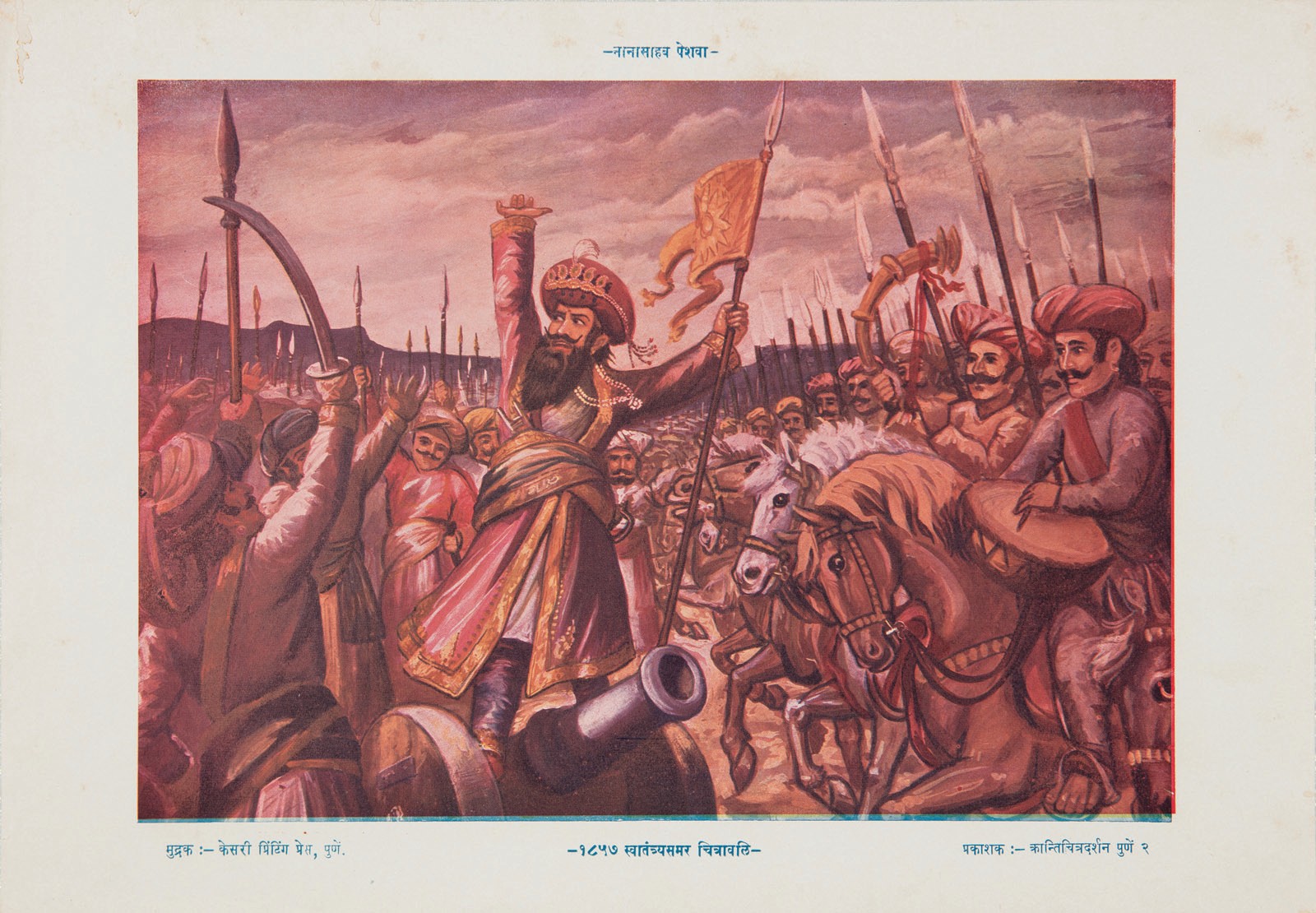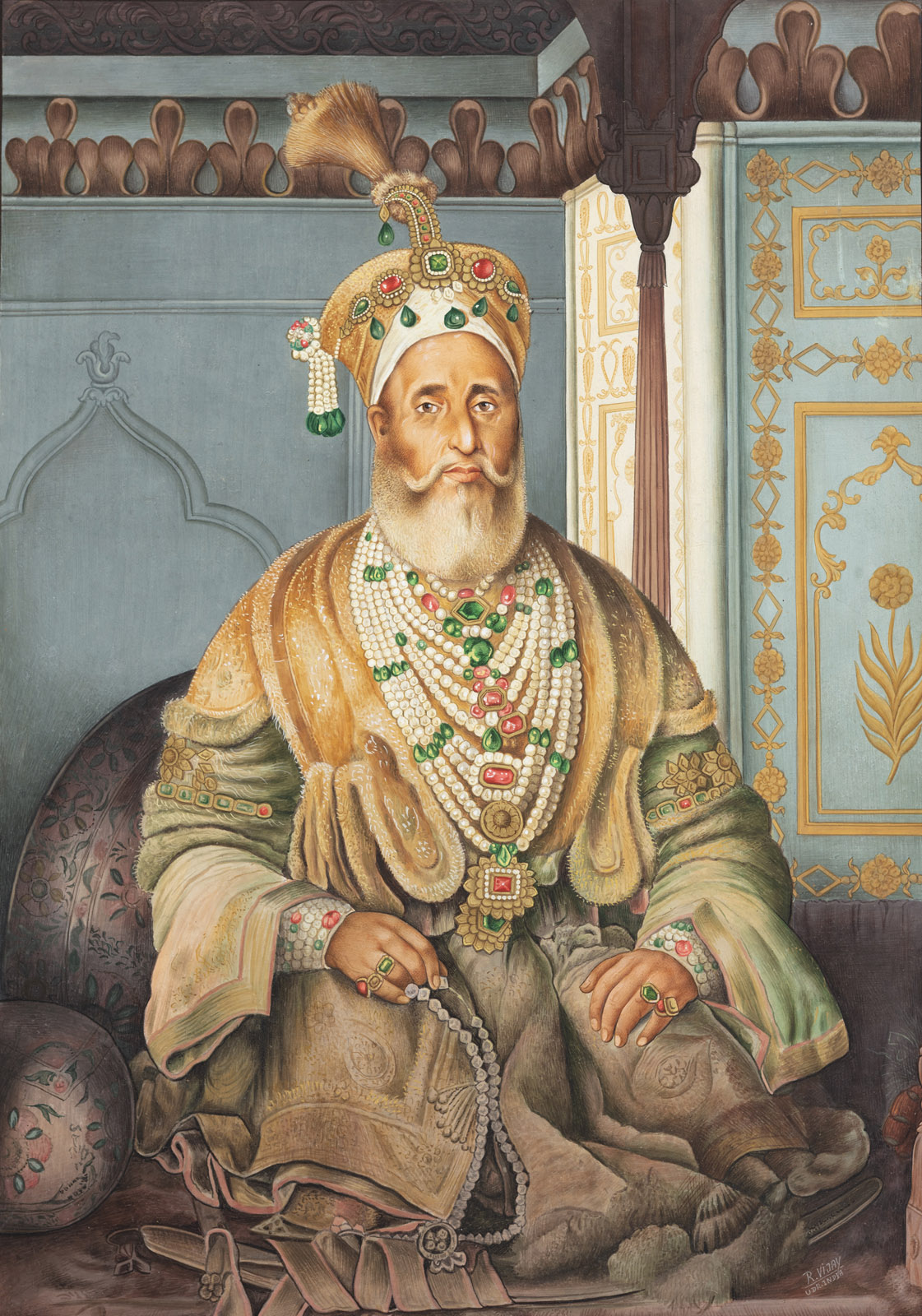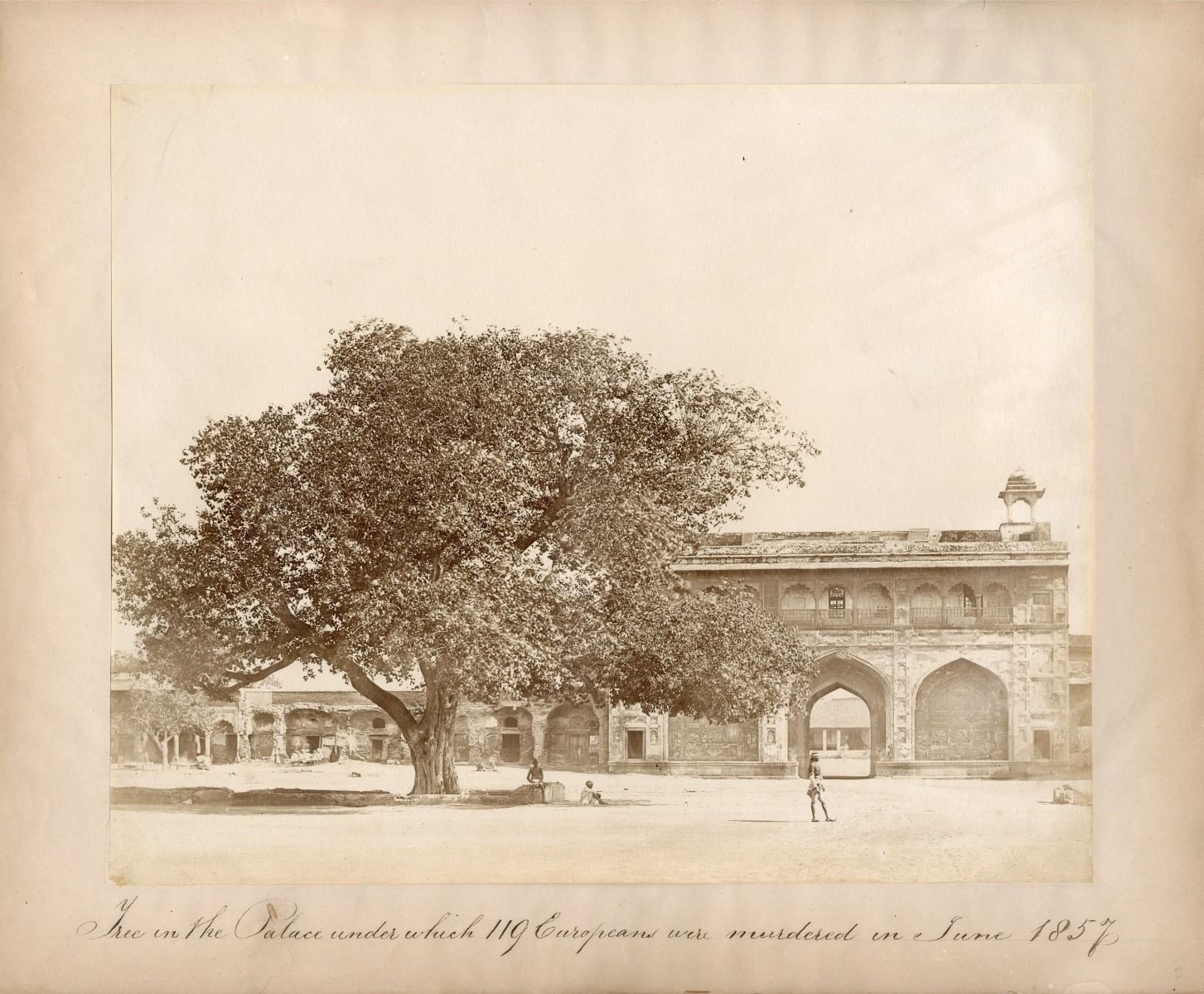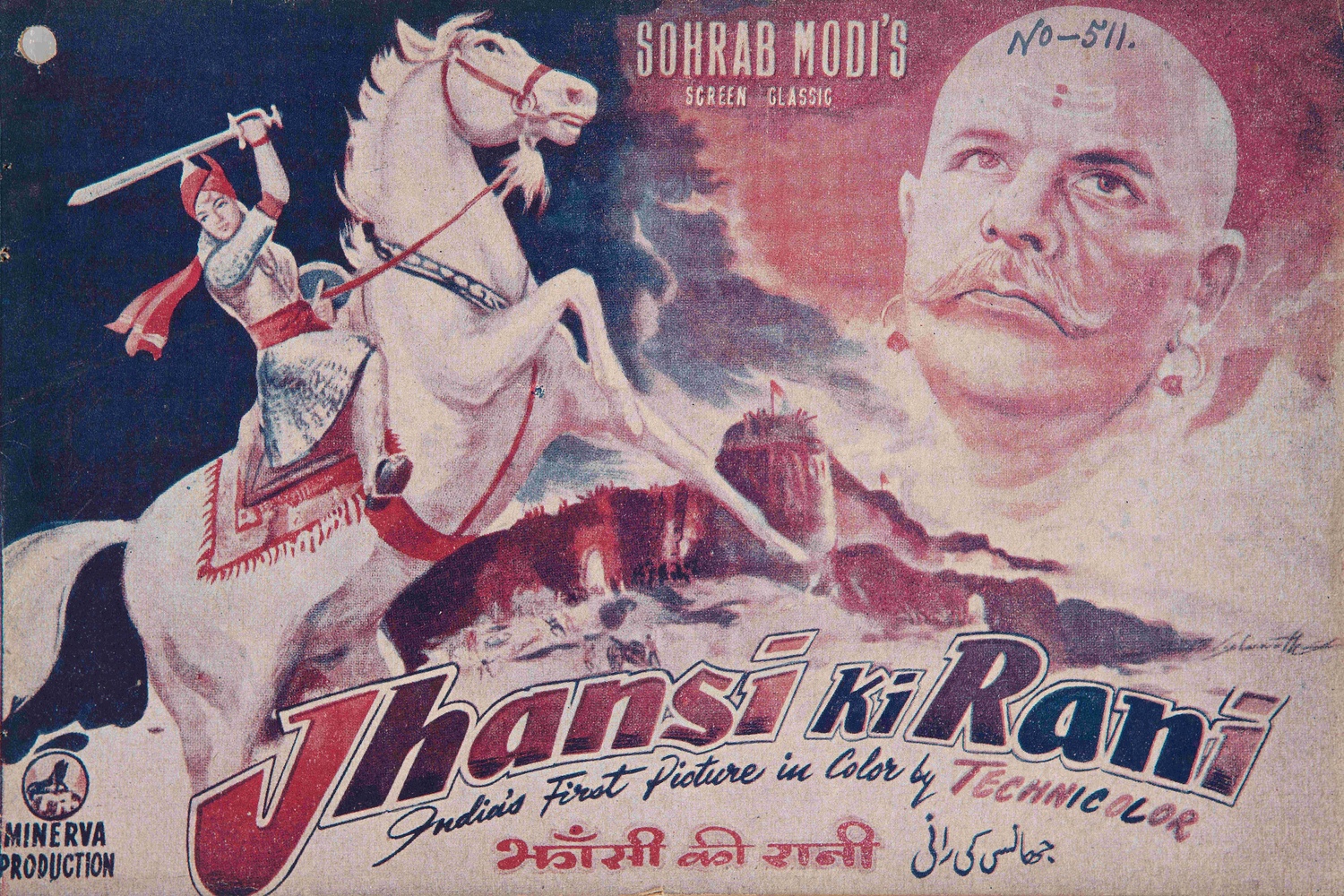Battle of 1857
After a hundred years of the East India Company’s administration, they were faced with widespread rebellion which threatened their hold over the subcontinent in 1857. Kings, queens, peasants, tribals and even sepoys under the employ of the Company rose up against them. Some have hailed the battles of 1857 as the ‘First War of Independence’. It is even regarded by many to have been the largest armed resistance to colonialism in the nineteenth century. Explore the varied narratives of the battles for freedom in the 19th century through selected artworks from the DAG collection.
R. K. Kelkar
Mangal Singh Pandey, 1857 1910
Offset Print On Paper
Anonymous
Attack of the Mutineers on the Redan Battery at Lucknow 1857
Etching and aquatint on paper
Thomas J Barker
The Relief Of Lucknow & Triumphant Meeting Of Havelock, Outram, & Sir Colin Campbell 1857- 1860
Engraving, tinted with watercolour on paper
Chittaprosad
Untitled
Ink On Scraper Board
Unidentified artist
Nanasaheb Peshwa, 1857 c. 1910
Offset print on paper
R. Vijay (after August Schoefft)
Bahadur Shah II c. 2000
Gouache on paper
Felice Beato
Tree in the Palace under which 119 Europeans were murdered 1858
Silver albumen print on paper mounted on paper
Unidentified artist
'Jhansi ki Rani' promotional booklet 1953
Offset print on paper
The Beginning - 1857
Ministry of Broadcasting &Information
Delve into a cinematic journey as the narrator accounts the uprising of Indian rebels and how small events, for varied reasons, from across the nation, gained momentum and grew into a massive popular movement against British colonialism.
Do you think it was a mutiny? Or will you consider this as India's first war of independence?
Canning India Mutiny Collection
Museums Victoria
Arms and weapons stand as enduring symbols of conflict and warfare. The collection of arms of Indian rebels, collected by the British as war booty, now displayed at Victoria Museum, is the tangible evidence of the uprising of the soldiers in 1857. Though these arms may not have matched the advanced weaponry of the British forces, they embody the indomitable spirit of the Indian rebels, who fought with unwavering courage and determination.
Two Sepoys of the 31st Native Infantry, Who Were Hanged at Lucknow, 1857
Getty Education
Freedom comes at a price—the price of sacrifice. Felice Beato, an Italian-born British photographer captures the haunting moment when two sepoys of the 31st Native Infantry, were hanged at Lucknow, 1857, for their audacious act of rebellion. This poignant image serves as a stark reminder of the price some pay in their pursuit of liberation.
Bahadur Shah Zafar’s Poem About The 1857 Revolt & Dilli-The Garden Of Harmony
Rana Safvi
Bahadur Shah Zafar, the last Mughal emperor of India, vividly captures the anguish and oppression during and after the 1857 revolt with his poetic skills. Imprisoned and deprived of writing materials, Zafar's scribbling ghazals with charcoal on the walls of his room reflect the sacrifices made during the First War of Indian Independence.
Discover the significance of this poem in honouring the memories of those who fought for freedom.through how other Indian newspapers reported the famine
Dastanbuy: A Diary of the Indian Revolt of 1857 by Mirza Ghalib
Rekhta
The Urdu Poet Mirza Ghalib, who was residing in Delhi witnessed first-hand the storming of the Delhi by the rebels. He captures the atmosphere of Delhi during that period and narrates his lived experience, providing a glimpse into the looting and violence that spread through the city.
While the rebels were protesting the British rule, how do you think their activities affected the common people living at that time?
Illustrated London News 1850-1859
Internet Archive
The British newspaper Illustrated London News minutely reports on the occurrences in India, documenting the British reaction at home around the 1857 revolt. The reports delve into the punishment that was doled out to the mutineers in different provinces.
Do you think the violence resorted to by the British was fitting of the crime?
Indian Rebellion of 1857: Map of the areas along which the Mutiny spread
Maps of India
A geographical map tracing the areas in which the Mutiny of 1857, marking the places which saw peasant revolt, religious revolt, prince’s revolt and principal centres of revolt by the sepoys. It provides a glimpse into the national dimensions of this mutiny.
Selections From English Periodicals Of 19th Century Bengal Vol. 5
Internet Archive
A series of articles written by an English periodical run by Indians out of Calcutta. It details on the trajectory that the revolt took and the sentiments of the genteel class of Calcutta to the activities of the rebels. While the reports show a support for the British administration and regret the actions of the Indian people, the editor also raises questions on the nature of British administration and political strategies about the management and punishment of the mutineers. These first-hand accounts from Bengal where the uprising began, really complicate the singular narrative of the Mutiny of 1857.
Do you think it’s possible for you to completely support one side?



